 Carter Horsley
Carter HorsleyDec 23, 2011
Carter's Review
The very handsome, mammoth, 35-story slab placed on a diagonal on its site at 630 First Avenue between 36th and 37th streets appears larger than it is because its broad side faces southwest toward the Manhattan entrance to the Queens Midtown Tunnel across First Avenue.
The angling of the brown-brick and bronze-glass tower, which was completed in 1985, creates a large plaza facing west that is graced with a very impressive, tiered fountain. Thomas Balsley designed the fountain and its large, triangular plaza.
The developer, the Glick Organization, and the architect, Costas Kondylis, then design partner at Philip Birnbaum & Associates, also developed, four years later, the Horizon just to the north and both projects are unusually sleek for Manhattan residential towers.
The sleek, strongly patterned façades of both buildings are designed to also lessen the visual bulk and both are a cut, or two, above typical high-rise construction of the period, especially in a neighborhood traditionally considered less than prime.
Manhattan Place has 487 condominium apartments.
While the area was for decades an industrial backwater that separated the United Nations complex a few blocks to the north from the corridor of hospitals a few blocks to the south, it is now a luxury high-rise enclave that is a dramatic example of Le Corbusier's famous "tower in-a-park" scheme as is the nearby Kips Bay Towers designed by I. M. Pei several years earlier a few blocks to the south.
Bottom Line
The strongly patterned façades of both buildings are designed to lessen the visual bulk and both are a cut, or two, above typical high-rise construction of the period, especially in a neighborhood traditionally considered less than prime.
Because of the large open area to the west, this project offers smashing and protected views of midtown from many of its apartments.
Description
The ends of Manhattan Place are angled and its broad façade is divided into six slightly protruding sections that provide bay windows. Both gestures are designed to mitigate the tower's bulk.
The angling of Manhattan Place not only maximizes more vistas for its residents and minimizes views of the large project to the south, but also moves the major portion of the tower away from the elevated FDR drive overlooking the East River.
Like the Horizon, the quality of detailing at Manhattan Place is very high and the communal areas such as the lobby are very ample and lushly impressive.
Amenities
The building typifies "modern" luxury apartment tower living with plenty of amenities such as video security, a garage, a children’s playroom, a laundry room, a bicycle room, a party room, a rooftop running track, a 24-hour doorman and concierge, basement storage, central air-conditioning, a rooftop health club with a swimming pool, a garage and a landscaped plaza with an impressive fountain.
Apartments
Apartment 23E is a two-bedroom unit that has an 8-foot-wide foyer that leads pas an enclosed 7-foot-long kitchen to an angled, 27-foot-long corner living room.
Apartment 30KL is a five-bedroom unit with a 30-foot-long angled corner living room next to a 22-foot-long dining area and a 9-foot-long enclosed kitchen. Three of the bedrooms have angled bay windows.
History
This site was formerly occupied by a Texaco gas station.
After negotiating with the City Planning Commission, the building was designed to face southwest instead of northeast as originally planned so that its landscaped plaza would face nearby St. Vartan’s Park.
In their great book, “New York 2000, Architecture and Urbanism Between the Bicentennial and the Millennium,” Robert A. M. Stern, David Fishman and Jacob Tilove provided the following commentary about the history of this Kips Bay neighborhood:
“Kips Bay was named for Jacobus Kip, who in the mid-seventeenth century owned the land roughly bounded by Twenty-third and Forty-second Streets, Third Avenue and the East River. In the early nineteenth century, the area became home to large residential estates as well as Bellevue Hospital, which by the 1890s had grown to occupy the two full blocks between Twenty-sixth and Twenty-eighth Streets, First Avenue and the East River. The construction of the Third Avenue and Second Avenue elevated railways in 1878 and 1880, respectively, ushered in a new era for the district, with tenements replacing estates. An even grittier character began to emerge with the completion in the early 1900s of Consolidated Edison’s mammoth Waterside station, a power plant occupying the blocks founded by First Avenue, Forty-first street, the East River and Thirty-eighth street. Construction of the East River Drive in the late 1930se and its reconstruction as an elevated highway in the 1960s cut the neighborhood off from the river, just as the opening the Queens-Midtown Tunnel in 1940 sliced with entry ramps and new access streets.
“North of Thirty-fourth Street, Kips Bay was an industrial district until the 1980s, when incremental zoning changes encouraged the redevelopment of the area’s underutilized manufacturing and commercial sites with seven super-scaled towers. Almost overnight the area was transformed into a near-textbook exemplar of urban brutishness.
“The first to go was Manhattan Place (1984), 630 Third Avenue, occupying a 40,000-square foot site bounded by First Avenue, Thirty-seventh Street, the FDR Drive and Thirty-sixth Street. Costas Kondylis, then the design partner at Philip Birnbaum & Associates, packaged 487 apartments in a thirty-five story brown brick and brown-tinted ribbon-windowed elongated hexagonal slab that lay diagonally across its site, allowing for a triangular landscaped public plaza (Thomas Balsley Associates) at the southwest corer that featured a grand, three-tiered circular fountain behind which sunken buff brick-paced area with around reflecting pool fronted a café and other commercial spaces located in the buildings’ brass-trimmed base.”
“Two blocks to the south, Rivergate (1985) 401 East Thirty-fourth Street, also designed by Kondylis, with Samuel Braverman, another partner at the Birnbaum firm, rose on a full-block site east of First Avenue between Thirty-fourth and Thirty-fifth Streets previously occupied by a Coca-Cola bottling plant. Although the developer, Donald Zucker, had acquired the lot in 1978, construction did not get under way for five years, a result primarily of negotiations with the community board, which successfully battled for a 20 percent reduction in the building’s size as well as a public park along First Avenue. The thirty-five story building packed 702 apartments above three floors of retail space in a stepped-back U-shaped plan that formed a deep, narrow courtyard open to the river. The building’s banal multi-balconied, brown brick-clad mass was dressed up with a 6,000-square foot-, three-story glass-covered atrium lobby embellished by waterfalls and Frank Stella’s thirty-two foot-by-eight-foot Damascus Gate Variation I (1969). But Thomas Balsey’s public plaza along First Avenue had some real style, providing the rare amenity of an ice-skating rink, a happy contribution to the developing neighborhood that was unfortunately removed in 1996 when the plaza was redesigned by Landgarden Landscape Architects.”
In 1988, the authors continued, “the Glick Organization, developer of Manhattan Place, completed the Horizon (Costas Kondylis of Philip Birnbaum & Associates), 415 East Thirty-seventh Street, between First Avenue and the FDR Drive, rising from a red-granite base as a forty-four-story L-shaped tower wrapped with bands of dark gray glass set between bands of pink and gray brick with continuous dark-gray glass bays at the reentrant corners. Though ordinary in most ways, the Horizon did at least provide 800 feet of a riverfront esplanade outbound of the East River Drive between Thirty-sixth and Thirty-eighth Streets. The waterfront amenity was realized through the efforts of a community coalition, established to reclaim the once-industrial river’s edge for recreational use; ….Because the city had no funds for the project, the plan depended on private developers looking for ways to appease neighborhood residents. Glick, the first to bite, hired Balsey for a two-block stretch, which was transported into a Battery Park City-inspired esplanade (1992).”
While the area was for decades an industrial backwater that separated the United Nations complex a few blocks to the north from the corridor of hospitals a few blocks to the south, it is now a luxury high-rise enclave that is a dramatic example of Le Corbusier's famous "tower in-a-park" scheme as is the nearby Kips Bay Towers designed by I. M. Pei several years earlier a few blocks to the south.
In 2008, plans were advanced for Sheldon H. Solow's enormous plans to redevelop the former Con Edison sites just to the north along First Avenue with about 4,000 apartments in several tall buildings, a plan that would significantly add to the area's population and traffic, but five years later no construction had yet taken place.
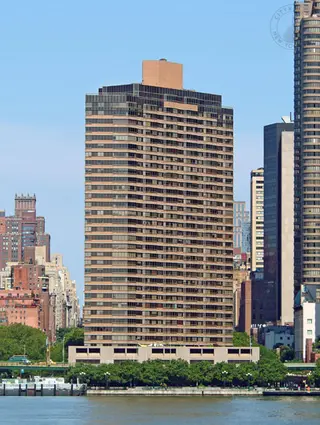
- Condo built in 1985
- 6 apartments currently for sale ($799K to $1.395M)
- 1 apartment currently for rent ($0)
- Located in Murray Hill
- 487 total apartments 487 total apartments
- 10 recent sales ($770K to $1.4M)
- Doorman
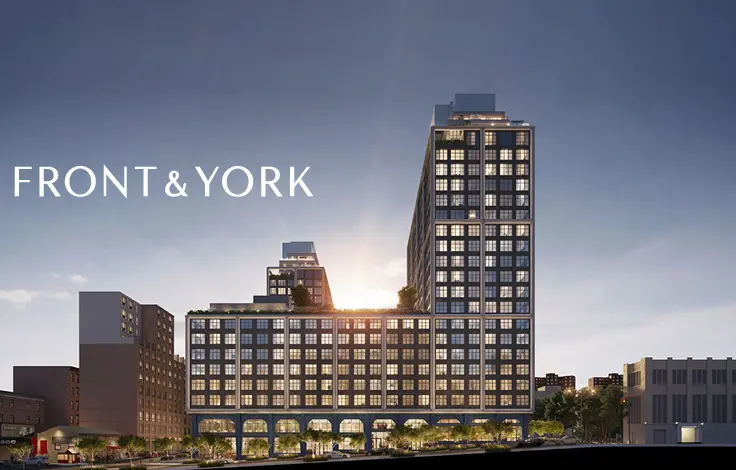
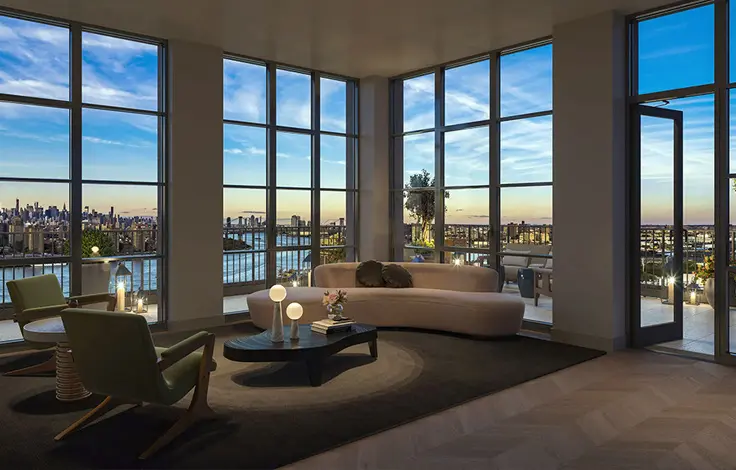

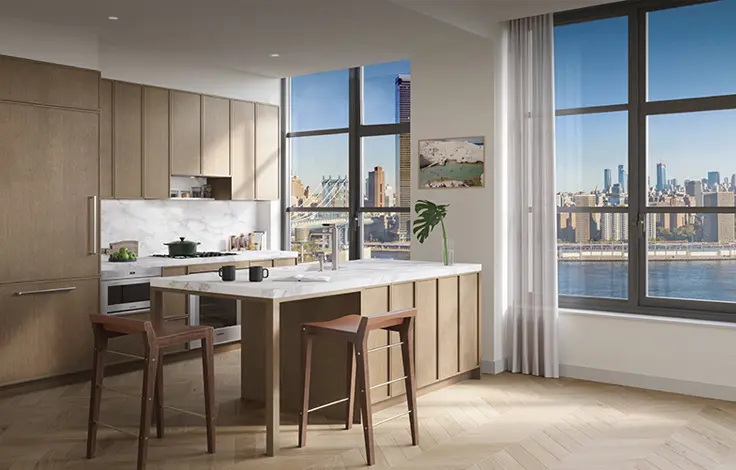
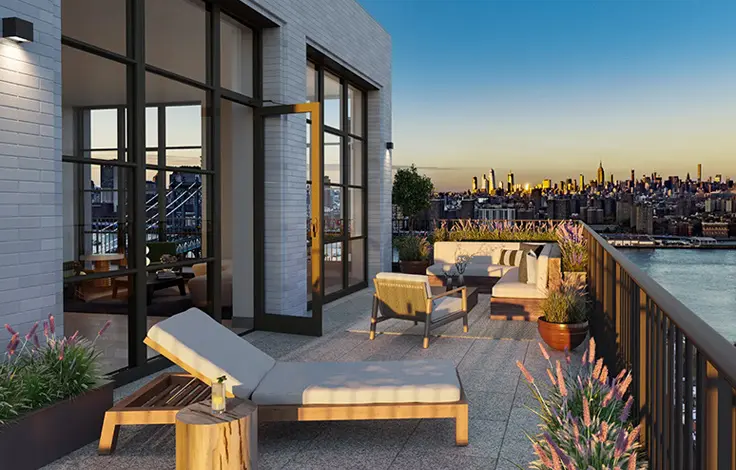
 6sqft delivers the latest on real estate, architecture, and design, straight from New York City.
6sqft delivers the latest on real estate, architecture, and design, straight from New York City.
